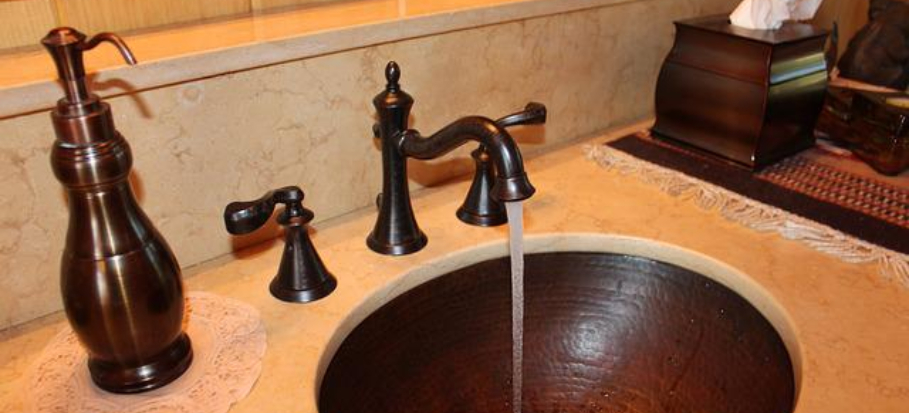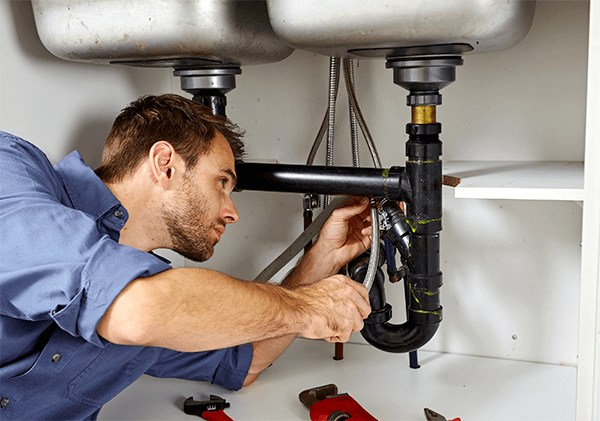Dealing with Plumbing Issues in Older Homes: Professional Guidance
Dealing with Plumbing Issues in Older Homes: Professional Guidance
Blog Article
Almost everyone maintains their own rationale when it comes to Common Plumbing Problems in Older Homes.

Older homes commonly include appeal, character, and background, but they can likewise bring a host of plumbing problems. Whether you're handling aging pipelines, low water pressure, or leaks, recognizing just how to attend to these usual issues is crucial to preserving a safe and functional home. In this overview, we'll discover the regular plumbing difficulties faced by older homes and supply practical remedies to keep your pipes in top form.
Recognizing Typical Pipes Concerns
Aging Pipes
Among one of the most typical concerns in older homes is aging pipelines. Relying on the age in which your home was built, the pipelines might be made from materials that have actually degraded gradually, such as galvanized steel, cast iron, or even lead. These products can rust, end up being breakable, or establish leaks, causing water damage and possible carcinogen.
Water High Quality Testing
Older pipelines can impact the quality of your water. Conduct a water high quality examination to look for contaminants such as lead, rust, or other impurities that may be presented by aging pipelines.
Solutions for Typical Plumbing Concerns
Changing Aging Pipes
If your home has old, wearing away pipes, take into consideration changing them with modern products like copper or PEX. This can be a substantial financial investment, but it will certainly stop future concerns and boost the safety and dependability of your pipes system.
Repairing Low Water Stress
To deal with low water pressure, begin by cleansing or changing old fixtures and removing mineral build-up in the pipelines. If the issue continues, it may be required to replace areas of rusty pipelines.
Repairing and Changing Dripping Pipes
For tiny leaks, you can utilize pipeline clamps or epoxy putty as a momentary fix. Nevertheless, it's best to replace dripping pipelines completely to prevent additional damage.
Upgrading Fixtures
Upgrading old fixtures to modern-day, water-efficient versions can boost your home's pipes performance and decrease water consumption. Search for fixtures with the WaterSense label for the best efficiency.
Dealing with Pipe Rust
If your pipes are corroded, replacing them with corrosion-resistant materials like copper, PVC, or PEX is the best service. Regular evaluations and water quality maintenance can help prevent better deterioration.
Low Tide Pressure
If you're experiencing low water stress, maybe as a result of mineral deposits, corrosion inside the pipelines, or old components that are no more functioning effectively. This can be a major hassle, particularly in areas like showers and sinks.
Leaking Pipes
Leaks are another frequent issue in older homes, frequently caused by rusty or damaged pipes. Even little leaks can bring about substantial water damages, mold development, and boosted water expenses if not dealt with promptly.
Obsolete Components
Outdated pipes fixtures such as faucets, toilets, and showerheads not just look old but might also be much less effective, vulnerable to leaks, or inappropriate with modern pipes standards.
Pipeline Corrosion
Deterioration is a typical problem in older pipelines, particularly those made from galvanized steel or actors iron. Corroded pipelines can restrict water circulation, trigger discoloration, and ultimately lead to leakages or pipeline ruptureds.
Assessing the Problem of Your Plumbing
Checking Noticeable Pipelines
Beginning by examining any visible pipelines in your home, such as those in cellars, crawl spaces, or under sinks. Look for indications of deterioration, leaks, or corrosion, which can show underlying issues.
Looking for Leakages
Check for leaks by checking areas around taps, commodes, and under sinks. You can also monitor your water meter prior to and after a duration of no water use to detect concealed leakages.
When to Call a Professional
While some plumbing problems can be taken care of with do it yourself solutions, there are times when it's ideal to call in an expert. If you're managing significant leaks, comprehensive rust, or are unclear regarding the problem of your pipelines, a qualified plumbing can offer skilled analysis and repair.
Preventive Maintenance Tips
Routine Assessments
Consistently inspect your plumbing system for signs of wear and tear. Catching problems early can stop pricey fixings down the line.
Water Stress Law
Guarantee your water stress is within the advised array to stay clear of emphasizing your pipelines and components. A plumber can install a stress regulator if needed.
Water Quality Maintenance
Install water filters or softeners if your water top quality is poor. This can shield your pipes and components from damages brought on by difficult water or pollutants.
Positive Pipe Replacement
If your home has very old pipes, think about positive replacement before significant concerns arise. This can save you from emergency situation fixings and water damages.
Final thought
Dealing with plumbing concerns in older homes calls for a mix of caution, preventive maintenance, and prompt upgrades. By comprehending the common challenges and knowing when to look for expert help, you can guarantee your pipes system remains functional and trusted for years ahead.
Common Plumbing Problems in Older Homes
Older homes have a ton of character from the antique brass faucets, clawfoot tubs, and colorful tile to the Dutch doors, transom windows, and archways, there s a lot to love. Unfortunately, that character often includes old plumbing that s past its prime and isn t fit to support modern appliances.
If you own an older home and are suspicious about strange noises (ghosts?), smells, leaks, or frequent clogs in your plumbing, it's possible that your home s old age is to blame.
Learn more about the most common old house plumbing problems, and what can be done to fix them!
What Are the Most Common Plumbing Problems in Old Houses?
Old, corroded piping. Most older pipes are made of material that corrodes and rusts more easily. Even if over the years some of that piping was replaced with better material, the rest may be damaged or repaired with lower-quality material. Though expensive, it may be the best option to re-pipe your plumbing especially if there s rust or lead in your water. Slow drains. This could be the result of many issues, but most likely because of pipe bellies. These are sags in your drainpipes that happen as your home settles and shifts downward over time, putting pressure on your pipes and creating negative slopes. This can restrict water from flowing correctly through them and result in slow drains. Frequent clogging. As you might expect, pipe bellies can also lead to frequent clogging. Another reason for clogging could be due to buildup over time, or blockages from sediment and root growth. Scheduling a drain inspection and drain unclogging service can eliminate this issue. Damaged or failing sewer lines. Old homes are more likely to have foundational shifts and tree root overgrowth. This can put a lot of pressure on and in your sewer lines, leading to damage. Another common reason for failed sewer lines is because of modern appliance upgrades. Newer appliances put more strain on sewer lines, and if your old pipes aren t equipped to handle this, it can result in damage. If you have any wastewater backup, slow drains, or soft spots in your yard, you may need sewer line replacement. Worn or outdated fixtures. Plumbing fixtures old or new aren t built to last forever. Even if your fixtures seem like they re working well, it s best to check the wear on any internal parts. Minor wear and tear over time can lead to more costly leaks and plumbing issues. Our experts can perform a plumbing inspection for any part of your home s plumbing. Improper installations or repairs. Whether your plumbing was installed a hundred years ago, installed incorrectly, repaired incorrectly, or repaired with outdated materials, this can affect the long-term stability of your plumbing. In older homes especially, having your plumbing inspected is vital to preventing damage. What Are Old Plumbing Pipes Made Of?
Galvanized steel. Most often used between the 1930s and the 1980s, this piping material was discovered later in the 1990s to be prone to rust and corrosion, releasing lead into the water, which is dangerous to consume. Copper. Most homes built around the 1960s are likely to have copper piping. Unlike galvanized steel, copper is one of the most durable materials for plumbing pipes. The issue with this material is the risk of lead, which could be present in the piping itself or the solder applied to the joints and fittings. PVC. This material is still used today and was often used in older homes where piping was replaced because it was easy and inexpensive to install. PVC is also very durable, lead-free, resistant to rust and corrosion, and handles high water pressure well. The downside is that hot water can make it warp. How to Fix Plumbing Problems in Old Homes
Have your plumbing inspected. Before you begin or schedule any type of repair, schedule a plumbing inspection. An expert will be able to properly identify all the issues in your plumbing and the best solution to avoid further damage. Get your plumbing repaired or replaced as needed. Depending on the issues found with your plumbing, you may need minor repairs or larger replacements. Make sure these issues are addressed before you tackle any smaller issues. Remove any clogs or buildup. It s likely your old pipes are clogged with debris, mineral buildup, hair, tree roots, and more. Having your drainpipes cleaned will improve overall drainage and help prevent future leaks. Replace old fixtures. Before replacing any fixtures, check with your local plumber first. Not only can new fixtures strain your old plumbing pipes, but installing them incorrectly can lead to costly damage.

I hope you liked our article about Common Plumbing Challenges In Old Buildings. Thanks for taking time to read our short article. Enjoyed reading our write up? Please share it. Let someone else check it out. Thank you for your time spent reading it.
Schedule Today! Report this page